Elgin Direct Reading Watches
Elgin first showed the "Direct Reading" concept watch during the National Jewelry Fair in Chicago, during July 1954. At this point the watch was only a non-functioning concept model and was known as "Peek-a-Boo". During that same show Elgin also displayed other concept models, Elgin Airtime that would receive time updates every 5 seconds featuring a transistorized circuit, another watch that featured a spectrum dial which should show radioactivity for those cold war moments you really need to know and a ladies capsule watch which could be changed between several mounts (necklace, broach, wristwatch and ring). They also showed two experimental all plastic watches, the lady's known as X58 and the men's X203 watches.
The design team had been unleashed and the above concept models is what the challenge had produced. Elgin were trying every option to combat the Swiss menace and surely they had reflected on the jump hour watches from the 1930's as inspiration for this example.[1]The Watch Word, August 1954
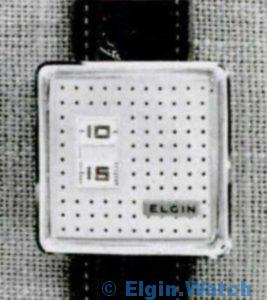
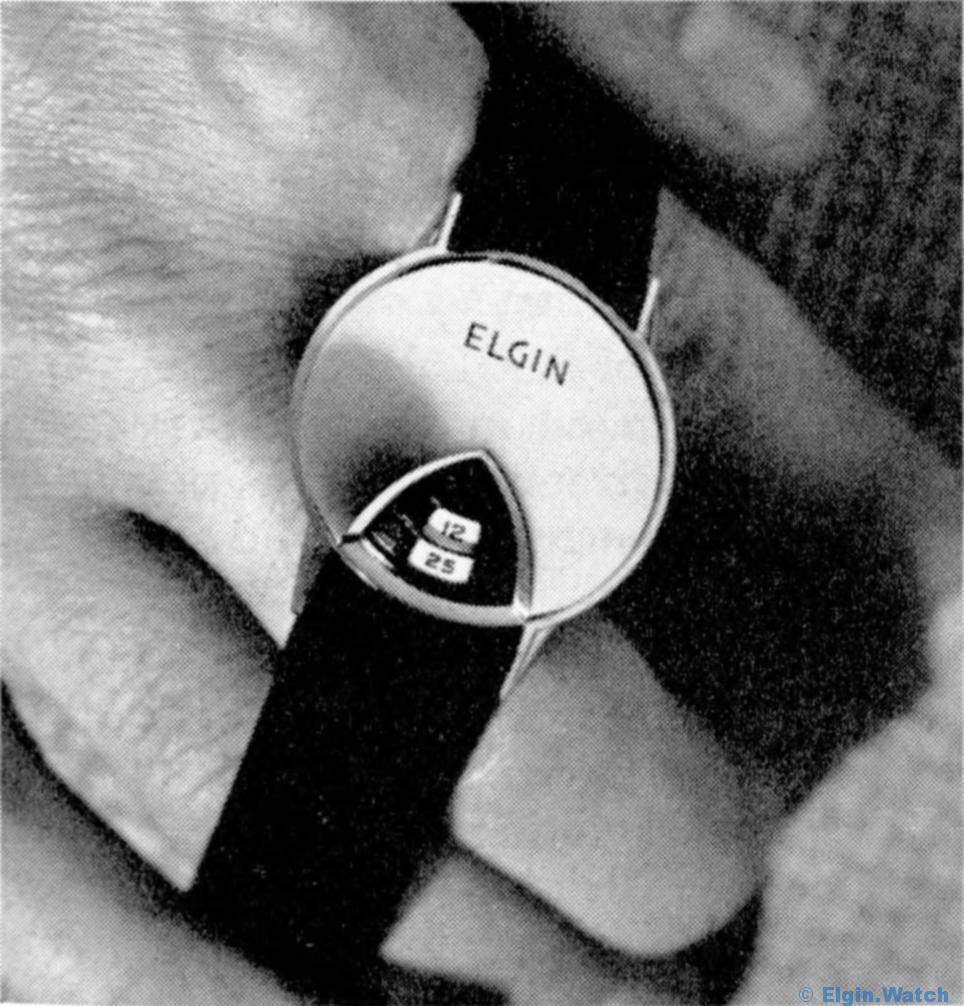
The demonstration of the Peek-a-Boo model had created a stir and demand for it which encouraged Elgin to produce it; the only slight detail remaining was to work out how to actually make it all work.
They turned to Mr Max Favret, manager of the product engineering team who studied the concept design and decided it was practical and proceeded to make a designer's dream to reality.
Many problems were encountered during the development phase and it was a core requirement to keep one of Elgin's basic movements otherwise a complete new movement would have to be designed. The design team decided to start with the current basic 13/0 movement. It was necessary to add to the regular 13/0 movement a mechanism that included 15 extra parts.
Some of the issues encountered during the design process
- Normally the hour hand is under the minute and a transparent plastic disc was developed to show the hour above the minutes
- It was difficult to print numerals and lines as well as the white shield on the plastic
- The plastic disc greatly expands in heat and contracts in cold
- We wanted to have the hour numeral steady until the next hour was reached, rather than have it gradually move like in a standard watch
The Research and Development department were engaged to resolve the issue of the plastic expansion and contraction and working hand-in-hand with the manufacturers were able to solve this problem and the plastic disc will function correctly in heat greater than 200F and in cold below zero.
the main remaining challenge was to have the hour disc jump, however without sapping so much power from the movement that a loss in motion would result every hour ? The hour disc had to jump in a fraction of a second with no drop in motion.
Mr Favret devised a spring that would put constant tension on the hour disc. Then a triggering mechanism quickly flips the disc without requiring any power from the mainspring.
Instrumental in solving the above problems were the following staff
- Rudy Krauss in Tool Engineering
- Bob Hall in Product Engineering
- Norm Beth in Engineering
Special test equipment was also designed during the development process that tested the G forces on wrists while playing golf.
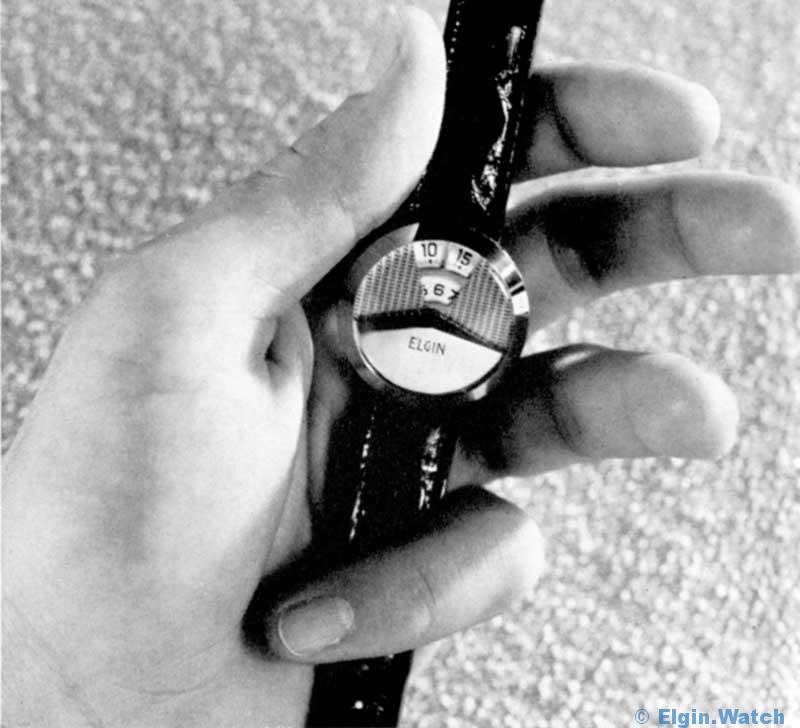
Elgin were ready with their new Direct Reading working model for the 1955 Chicago and New York jewelry shows. Again it was received enthusiastically and again Elgin received tremendous publicity for the new concept watch.
Elgin immediately put the watch into production and started building inventory to prepare for the first release in January 1956.
Elgin decided on an "Ink spot" method of distribution, starting in one area and jumping to new locations a few weeks later and gradually increasing distribution.
The first test city was in the state of Washington, in the Seattle-Tacoma area.
In March the "Ink spot" markets were opened up to California, Los Angeles and San Francisco.
Elgin also learned at that time that the first of the competitors were imitating Elgin's Direct Reading model with a low cost non jeweled which the hour disc merely turned instead of jumping at the hour.
One of the very first advertisements for the newly released Lord Elgin Direct Reading models. [2]Daily Capital Journal, March 13 1956
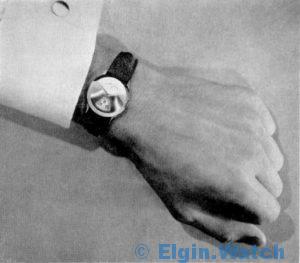


With the launching of the second Lord Elgin Direct Reading model which went straight to national distribution, branding was updated to include InstaVision dial which was a now a feature of the Direct Reading models (like it wasn't already ?) and they also started to point some other benefits like no more bent hands or broken crystals ?[3]The Logansport Press, August 19 1956
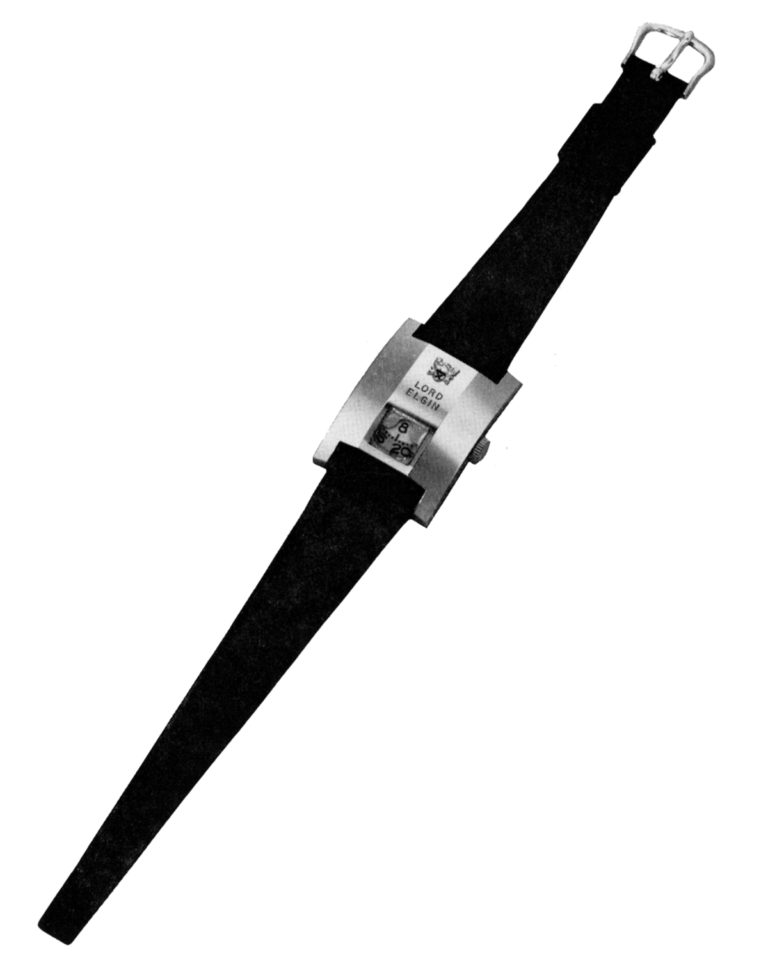
Elgin would release the non Lord Elgin version of the Direct Reading watch at the end of 1956 [4]Anderson Daily Bulletin December 6 1956
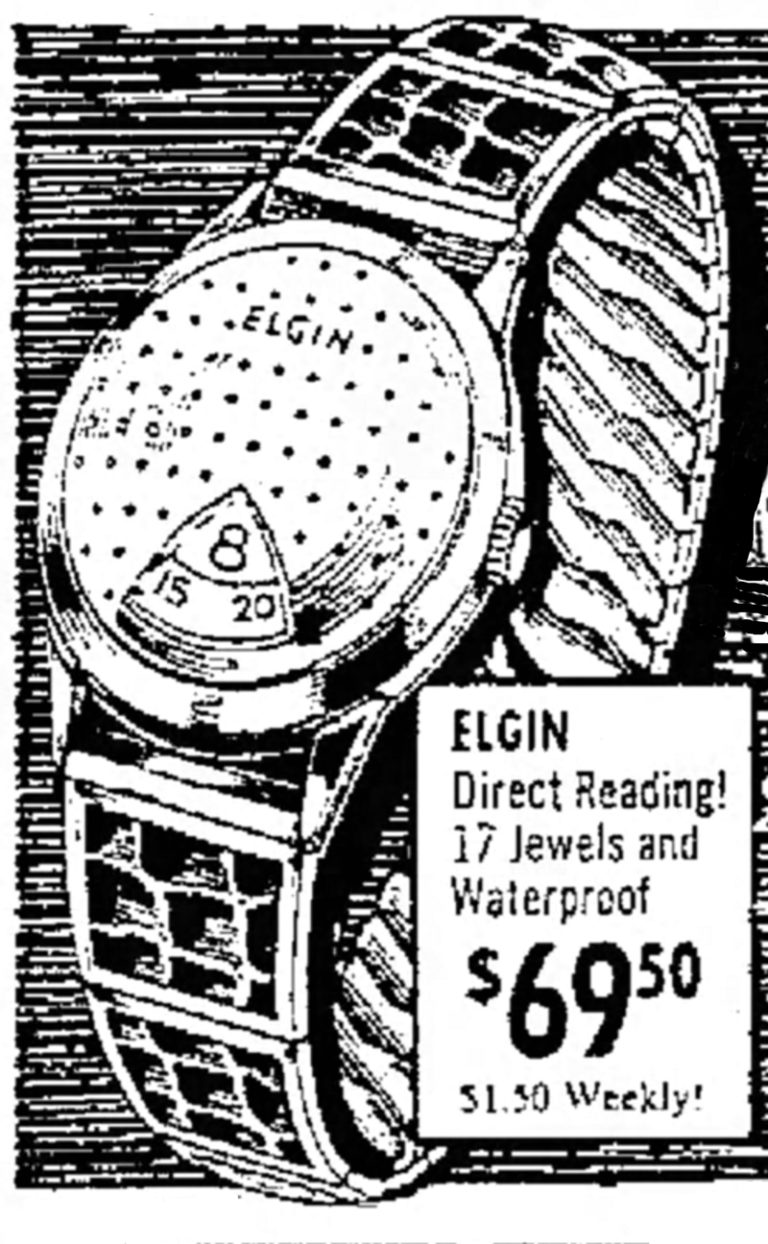
Elgin definitely provided style innovation in these watches as well as technical innovation (good or bad, I'll let you decide), These watches were on the retail market from 1956 to 1962 and had several revisions over that period in the display window and movements.
Today these watches are highly sort after and draw a large fee, if you are hunting these, here are a few pointers
Lord Elgin Rectangle Model (people call this the Elvis model, its got nothing to do with Elvis apart from he wore it once, so knock it off)
- the original Elgin crest had both maroon and blue enamel in it - if you plan on keeping this one, hold out for one
Lord Elgin Round Model (people call this the Chevron, Elgin never named it this)
- the point on the chevron normally displays brassing or damage due to being knocked while worn
- there were original two factory polish finishes on the bezel (satin and gloss)
Elgin Round Model (people call this the Golf Ball)
- this is only Direct Reading model known to come in both Yellow and White gold filled cases
Regardless of the model
- the hours should jump cleanly at the end of each hour, if they slowly turn this indicates issues with the movement
- if the hour jumps before the hour, then the discs are out of alignment
- not all watch makers will work on these movements or even have the knowledge these days
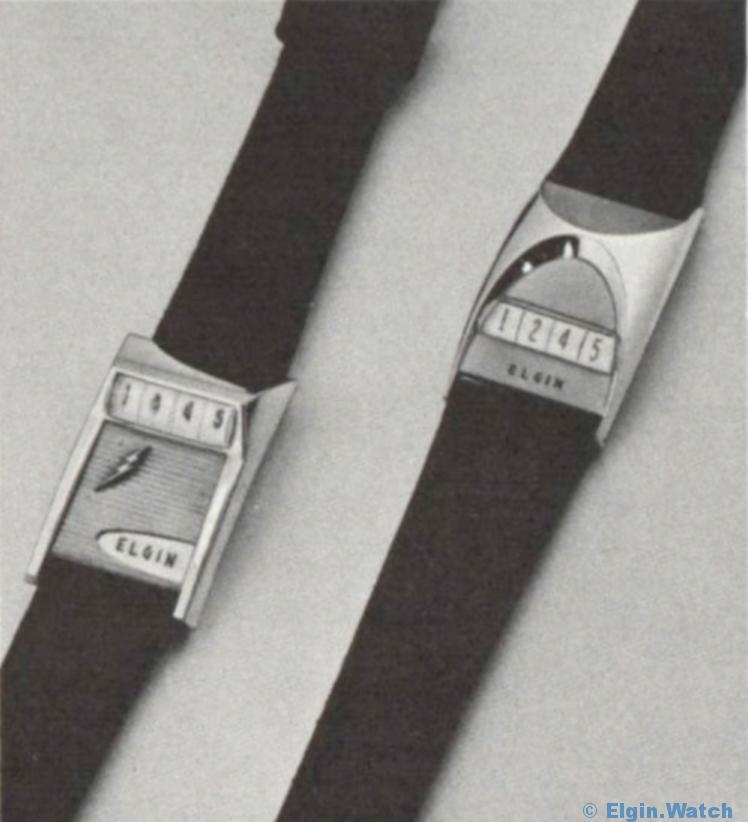
In 1955 Elgin also designed a similar Direct Reading concept model with an odometer display. These examples shown were non-working and were designed to be available in both mechanical and electronic movements. [5]Elgin Annual Report, 1955